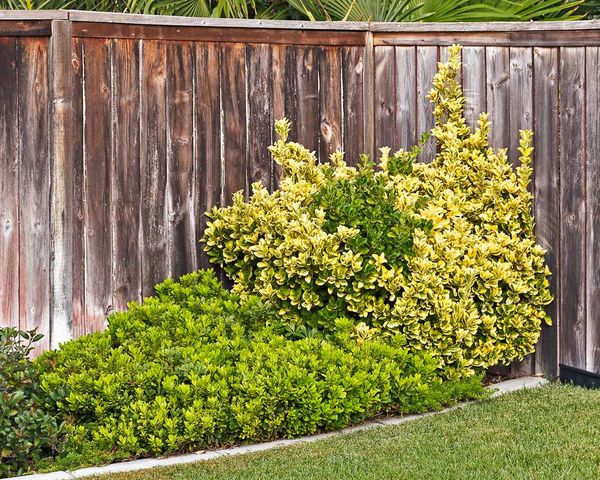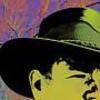Auto to Manual
Oct 31, 2011 14:29:49 #
sjbegres
Loc: Pittsburgh, PA
Can someone explain the following to me. I am trying to learn to switch from auto to manual. I took a photo on auto, which turned out a nice warm color. I checked the settings and then took the same exposure on manual, which turned out a rather bluish color. Same room, same DOF, same subject, etc. etc.
I am confused.
I am confused.
Oct 31, 2011 14:44:00 #
That one seems odd to me. It sounds like a white balance issue, but since your white balance was probably still on auto, I have to wonder if the light changed or something like that, to account for using the same settings, but getting different results.
What camera was this?
What camera was this?
Oct 31, 2011 15:16:53 #
sjbegres wrote:
Can someone explain the following to me. I am trying to learn to switch from auto to manual. I took a photo on auto, which turned out a nice warm color. I checked the settings and then took the same exposure on manual, which turned out a rather bluish color. Same room, same DOF, same subject, etc. etc.
I am confused.
I am confused.
Thinking that if you were in full manual you then also needed to set you ISO as it too becomes a manual setting. I of course do not know if you did or not but a blue tint is often indicative of that.
Check out Sports Photography section of our forum.
Oct 31, 2011 15:25:11 #
sjbegres wrote:
Can someone explain the following to me. I am trying to learn to switch from auto to manual. I took a photo on auto, which turned out a nice warm color. I checked the settings and then took the same exposure on manual, which turned out a rather bluish color. Same room, same DOF, same subject, etc. etc.
I am confused.
I am confused.
There is no mystery to shooting in Manual with todays cameras..
They all have a meter in them that you can readily see in action in the viewfinder.. Once you have selected your ISO and Aperture setting, simply look in the viewfinder and set a shutter speed that puts the meter into a proper exposure range.. For those just starting out, that would be aligning one needle (mark) with the other.
Once you have mastered this basic Manual operation, you are ready to adjust settings from the base for enhancement/affect.. But, proper exposure is always proper exposure, regardless of what mode you have the camera in..
Oct 31, 2011 16:26:39 #
notnoBuddha wrote:
Thinking that if you were in full manual you then also needed to set you ISO as it too becomes a manual setting. I of course do not know if you did or not but a blue tint is often indicative of that.
Sorry - blue tint is an indication of white balance, not ISO.
Verify that the white balance is set for the type of lights you are shooting in - sunlight, clouds or shade, fluorescent, flash, incandescent or tungsten. I know that shooting in fluorescent or even natural light with the white balance set for incandescent (or tungsten) will cause a blue tint.
Oct 31, 2011 18:19:18 #
snowbear wrote:
quote=notnoBuddha Thinking that if you were in fu... (show quote)
you are of most certianly 100% correct,and I was out to lunch and I see no reason for you to be sorry.
Nov 1, 2011 06:00:36 #
knowing what camera you have might help. just hang around or sit down , switch to manual, and start playing with iso,white balance, f/stops, while always taking photos more or less from the same subject. you will surely surprised
Check out True Macro-Photography Forum section of our forum.
Nov 1, 2011 07:21:36 #
sjbegres wrote:
Can someone explain the following to me. I am trying to learn to switch from auto to manual. I took a photo on auto, which turned out a nice warm color. I checked the settings and then took the same exposure on manual, which turned out a rather bluish color. Same room, same DOF, same subject, etc. etc.
I am confused.
I am confused.
SJ,
The problem is that the manual setting had a WHITE BALANCE that was set too low, you should have been somewhere in the vicinity of 3200K. Look in your manual, it will give you the K value for all of the icons on the WB screen.
Nov 1, 2011 08:03:24 #
Nov 1, 2011 08:29:33 #
Ljensen wrote:
I'd compare the full EXIF settings from both shots. But it does sound like WB.
It is most definitely a WB problem.
Nov 1, 2011 09:58:02 #
Check out Traditional Street and Architectural Photography section of our forum.
Nov 1, 2011 10:14:30 #
Nov 1, 2011 16:02:44 #
Try this approach to go from Auto to Manual. Use one Manual setting at a time, while leaving the others on Auto. You then can learn how each affects the scene and its exposure.
You have several choices: Shutter Speed, Aperture, ISO, and White Balance (WB).
Let me suggest you start with Aperture. On a Canon camera, turn the dial to Av. The other three settings will automatically adjust themselves for a good exposure.
Begin with, say, f/8 or f/7.1, if outdoors. You may wish to begin with f/2.8 or thereabouts if indoors.
Put the 3 other settings on Auto.
Take a picture.
Note the automatically selected values for the 2 settings (Shutter Speed and ISO). In low lighting, you will see a high ISO. In daylight, you will see a low ISO -- typically 100 ISO. The Shutter Speed will show, too.
For Auto ISO, note the variability of it. The ISO will often fall between the full stops of 100, 200, 400, 800, etc. For example, you may see ISO 500, or some other fraction of a full ISO stop.
The Shutter Speed may drop too low, under 1/60 sec, for handholding the camera without blurring the scene. Of course, when experimenting, you may not care so much about blurring. You will concern yourself more with the relation of Aperture to other settings.
Interestingly, the Canon Rebel cameras do not indicate the recorded WB in the monitor display, but you can gain a sense of the trueness of the colors by reviewing the image there. Auto WB generally comes very close to a correct WB, particularly if a true white exists in the scene.
The next step will involve trying one of the other settings in Manual mode, while the rest stay in Auto mode.
White Balance (WB) presents a big subject in photography. For now, try to match the WB to the scene as best you may. When in doubt, go to Auto WB.
This following web site also may help you learn the relation of three settings of a DSLR:
Simulates operation of a DSLR: http://camerasim.com/camera-simulator.html
Explains the relation of Aperture, ISO, and Shutter Speed: http://www.cameraporn.net/2007/12/24/aperture-iso-and-shutter-speed-the-good-kind-of-threesome/
Good luck.
You have several choices: Shutter Speed, Aperture, ISO, and White Balance (WB).
Let me suggest you start with Aperture. On a Canon camera, turn the dial to Av. The other three settings will automatically adjust themselves for a good exposure.
Begin with, say, f/8 or f/7.1, if outdoors. You may wish to begin with f/2.8 or thereabouts if indoors.
Put the 3 other settings on Auto.
Take a picture.
Note the automatically selected values for the 2 settings (Shutter Speed and ISO). In low lighting, you will see a high ISO. In daylight, you will see a low ISO -- typically 100 ISO. The Shutter Speed will show, too.
For Auto ISO, note the variability of it. The ISO will often fall between the full stops of 100, 200, 400, 800, etc. For example, you may see ISO 500, or some other fraction of a full ISO stop.
The Shutter Speed may drop too low, under 1/60 sec, for handholding the camera without blurring the scene. Of course, when experimenting, you may not care so much about blurring. You will concern yourself more with the relation of Aperture to other settings.
Interestingly, the Canon Rebel cameras do not indicate the recorded WB in the monitor display, but you can gain a sense of the trueness of the colors by reviewing the image there. Auto WB generally comes very close to a correct WB, particularly if a true white exists in the scene.
The next step will involve trying one of the other settings in Manual mode, while the rest stay in Auto mode.
White Balance (WB) presents a big subject in photography. For now, try to match the WB to the scene as best you may. When in doubt, go to Auto WB.
This following web site also may help you learn the relation of three settings of a DSLR:
Simulates operation of a DSLR: http://camerasim.com/camera-simulator.html
Explains the relation of Aperture, ISO, and Shutter Speed: http://www.cameraporn.net/2007/12/24/aperture-iso-and-shutter-speed-the-good-kind-of-threesome/
Good luck.
sjbegres wrote:
Can someone explain the following to me. I am trying to learn to switch from auto to manual. I took a photo on auto, which turned out a nice warm color. I checked the settings and then took the same exposure on manual, which turned out a rather bluish color. Same room, same DOF, same subject, etc. etc.
I am confused.
I am confused.

Nov 1, 2011 16:28:47 #
sjbegres
Loc: Pittsburgh, PA
Thanks so much for the information.
Interestingly, the photo in question was taken indoor with WB on Incandescent. It still turned out bluish.
I will take all your advice, which is bound to be helpful. Thanks, again.
Sherrill
Interestingly, the photo in question was taken indoor with WB on Incandescent. It still turned out bluish.
I will take all your advice, which is bound to be helpful. Thanks, again.
Sherrill
Nov 1, 2011 16:45:32 #
Glad to help. Reading the Histogram also aids in acheiving a good exposure. These 2 web sites may provide useful guidance:
http://www.digital-slr-guide.com/how-to-read-a-histogram.html
http://www.luminous-landscape.com/tutorials/understanding-series/understanding-histograms.shtml
http://www.digital-slr-guide.com/how-to-read-a-histogram.html
http://www.luminous-landscape.com/tutorials/understanding-series/understanding-histograms.shtml
sjbegres wrote:
Thanks so much for the information.
Interestingly, the photo in question was taken indoor with WB on Incandescent. It still turned out bluish.
I will take all your advice, which is bound to be helpful. Thanks, again.
Sherrill
Interestingly, the photo in question was taken indoor with WB on Incandescent. It still turned out bluish.
I will take all your advice, which is bound to be helpful. Thanks, again.
Sherrill
Backyard Corner, Morning

If you want to reply, then register here. Registration is free and your account is created instantly, so you can post right away.
Check out Traditional Street and Architectural Photography section of our forum.





